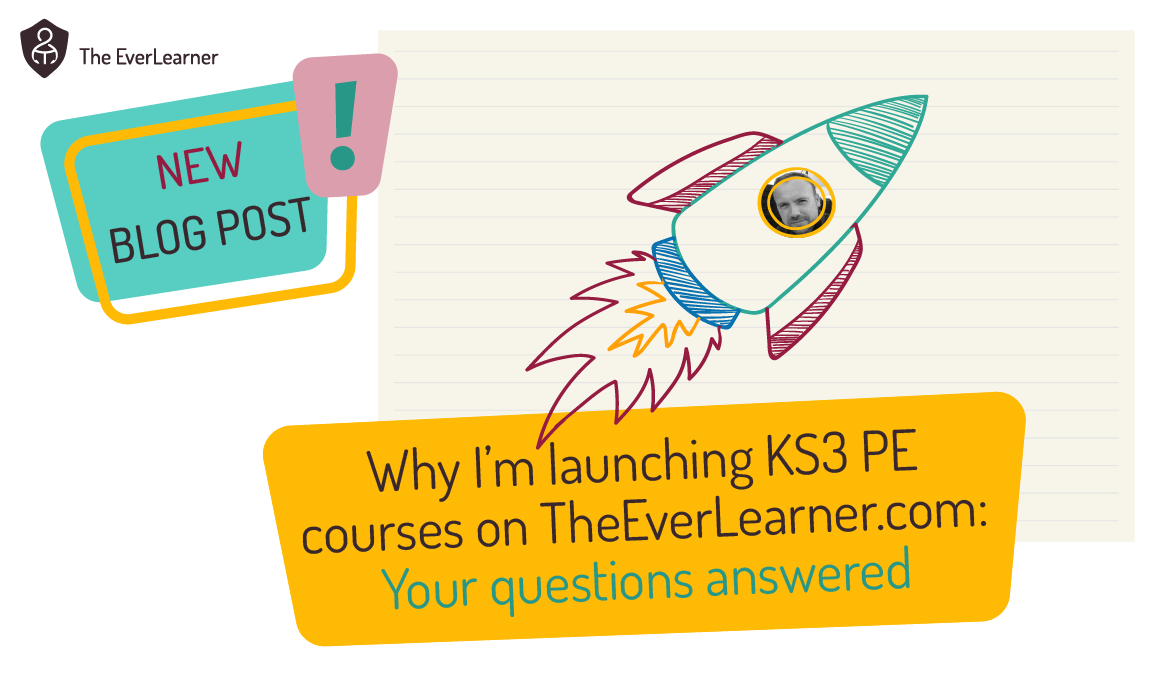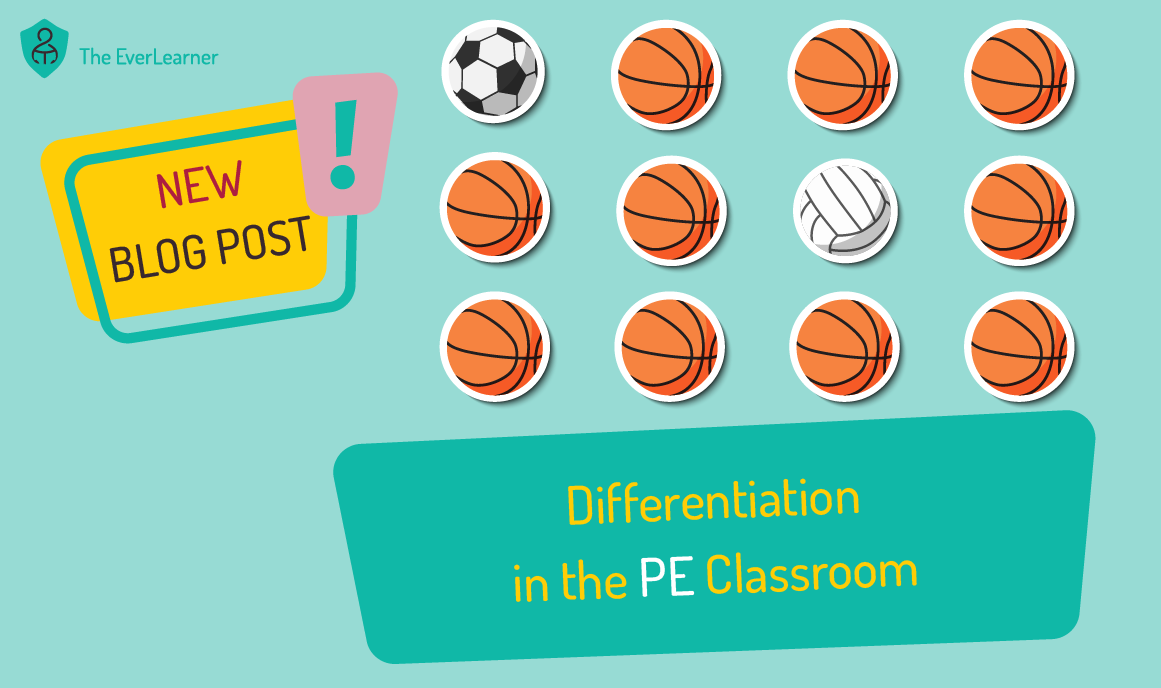My five favourite PE assignment structures on TheEverLearner.com
Whether you are a current customer of TheEverLearner.com or perhaps contemplating being one, I want to take the opportunity to draw your attention to my five favourite types of assignments on the platform.
Assignments can be thought of as compelled learning on TheEverLearner.com. A teacher –you, let’s say– decides that a certain learning experience is required and then allocates that experience to the relevant group of students with the relevant timescale and the relevant challenge level. The teacher sticks to the three golden rules of assignment setting, which are:
- Make it “skinny”.
- Make it a pattern.
- Ask the “When?” question.
And now the teacher is ready to start allocating their assignment.
In this post, I want to show you my five favourite assignment types and why I use them:
Assignment type 1: Preloading
Q: Is it “skinny”?
A: Yes, it will allocate in the region of 15 minutes experience to the student.
Q: Is it a pattern?
A: Yes, assuming that I set an equivalent high-quality assignment on other occasions.
Q: When does the assignment take place in relation to the peak learning experience?
A: It happens before the peak learning experience:
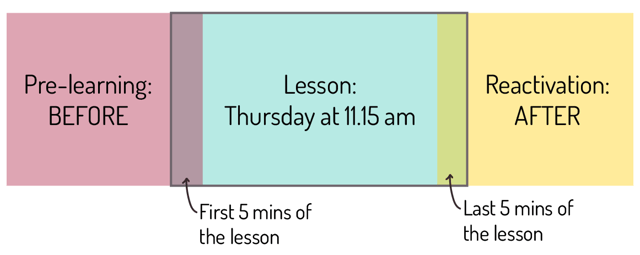
A preloading assignment, as its name suggests, requires a student to engage with learning prior to the peak learning experience (the lesson). Previously, colleagues have tended to use the term “flipped learning” but I prefer the term “preloading”, as it is more descriptive and precise.
How does it work?
My preloading assignment requires at least two experiences:
- A short, highly specific video tutorial presented in an educationally rigorous environment.
- A short mastery quiz under test conditions.
Anything short of this is not an acceptable format for a preloading assignment in my classrooms.
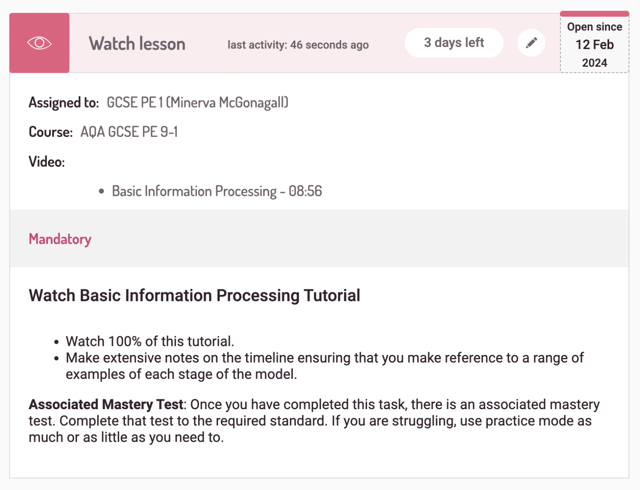
Notice that the tutorial is about nine minutes long. Notice that I have given specific instructions to my students.
And here’s part of this initial assignment type:
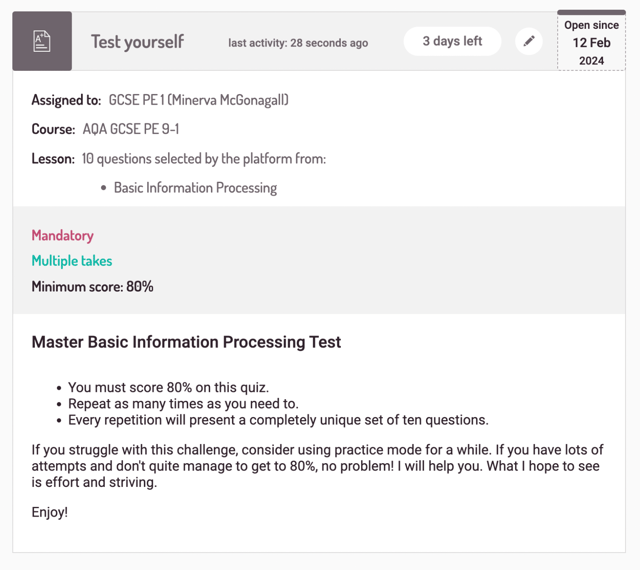
So, consider what we have here: we have two mini-assignments that make up one structure (preloading). Students will engage with these tasks for about 20 minutes in total, which helps me to achieve my intended 1:20* ratio.
*The 1:20 ratio is a measure of how sustainable your homework tasks are. A sustainable homework task will be structured like this:
One minute of teacher setting, tracking and marking homework = 20 minutes per student of high-impact learning
Anything outside of this structure is NOT A SUSTAINABLE HOMEWORK and should be done very infrequently.
Assignment type 2: Reactivation
I am a massive fan of snappy reactivation assignments. In the preloading assignment above, my students learned the information processing model in advance of the peak learning experience (the lesson), which takes place on Thursday at 11:15. They will then complete my lesson and, as soon as possible afterwards, I want them to reactivate that learning. I might do something like this:
Notice that I am now thinking coherently about what happens after the peak learning experience (lesson). I am insisting that students engage with learning some time immediately following their learning of it as well as discriminate between this new learning and older learning.

Assignment type 3: Weekly whole-course review
I set this assignment for every group I work with every week of the year without fail. I’m not sure it could be simpler. Here’s what I do:
- 20 questions
- From all lessons studied to date
- Once a week
- One take
That’s it. Simple, simple, simple!!
Take a look:
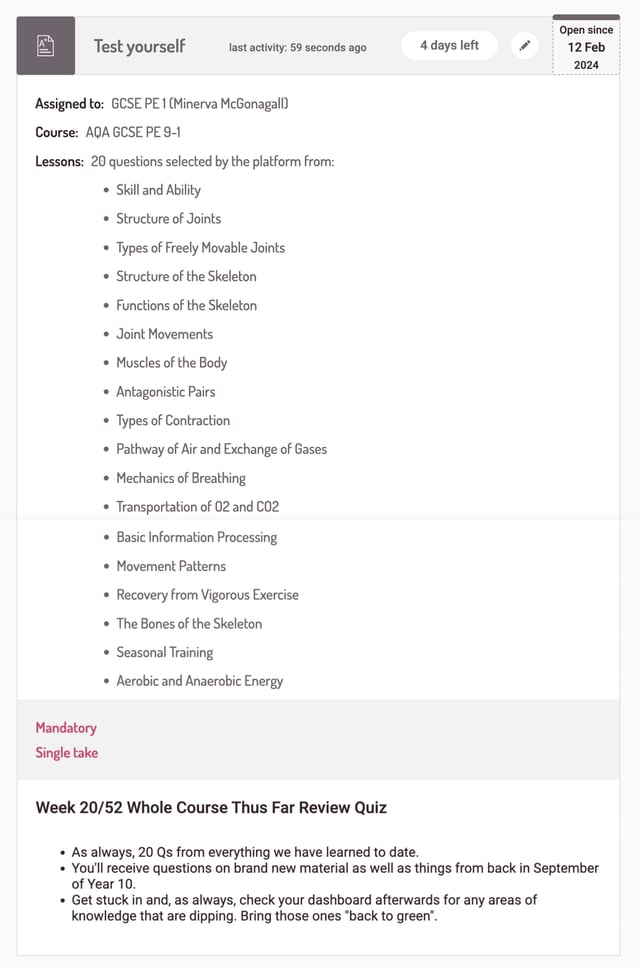
I’ve only taken a snap of the very top and very bottom of the assignment, as the lesson list is long but, hopefully, you can see how useful this assignment is.
Assignment type 4: Skills-based exam
How many times do you set a skills-based exam? Seriously, how many times have you done it? Big claim coming up: I only set skills-based exams. 😲
Take a look:
Please notice that my exam is skills-focussed and happens to be about skill acquisition. I am deliberately targeting the skills of the course through the assignment.
Assignment type 5: Pre-exam checkpoint
I discovered recently that checkpoints are, perhaps, the perfect pre-exam writing task. Checkpoints have always been used to summarise learning but I want to take this opportunity to challenge you to consider checkpoints as pre-exam experiences.
Have a look:
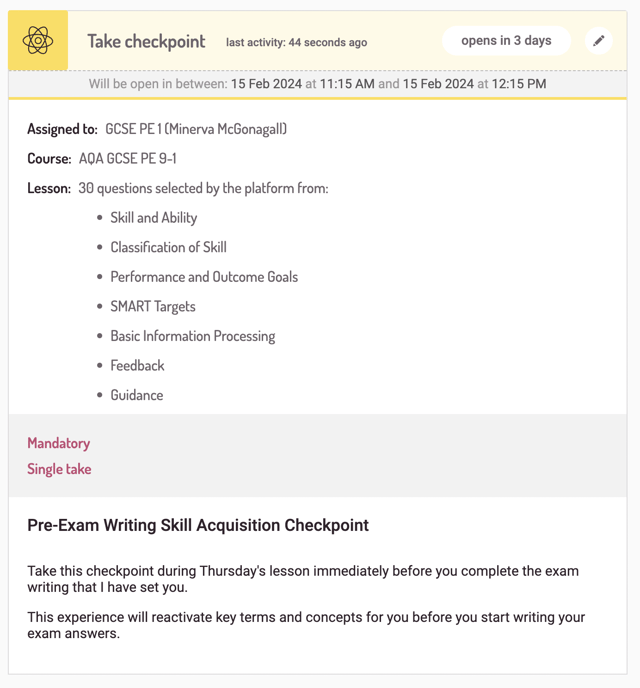
I am using the checkpoint to stimulate key language and concepts before the students write in prose. Quizzing can improve prose writing, especially when the quizzing is used in this way.
So, what do you think? Have these five assignment types stimulated any ideas or reflections? I hope so.
Thank you for reading.
James
%20Text%20(Violet).png)

